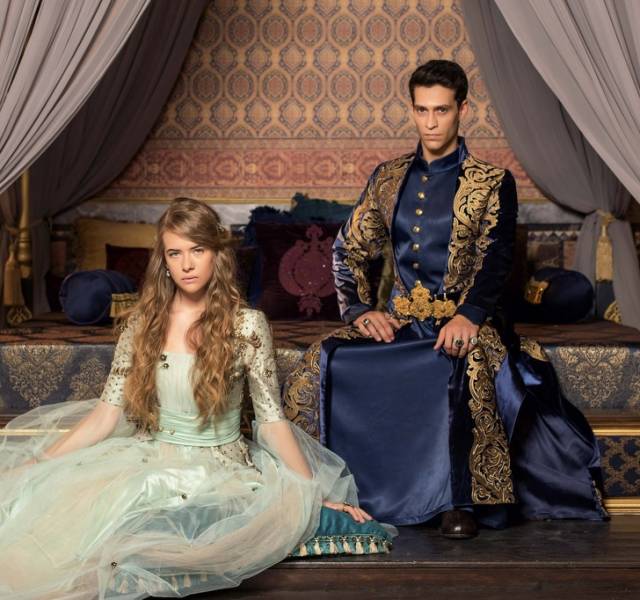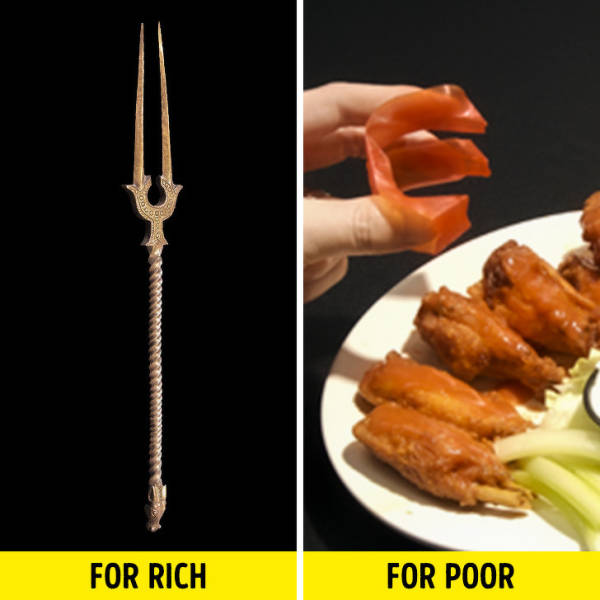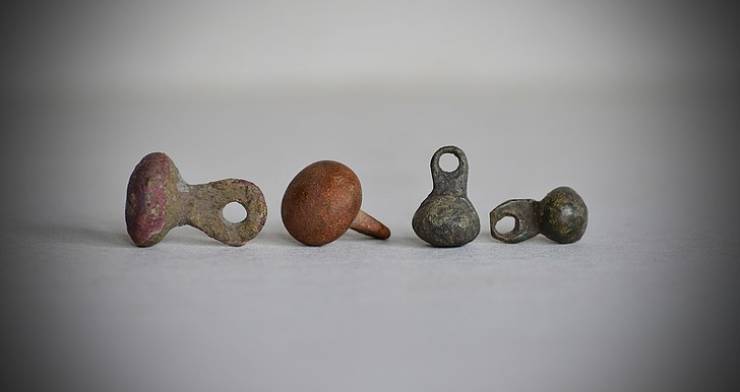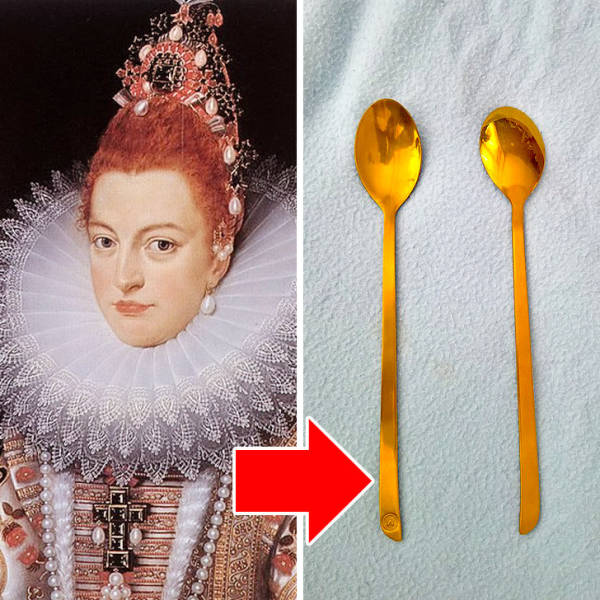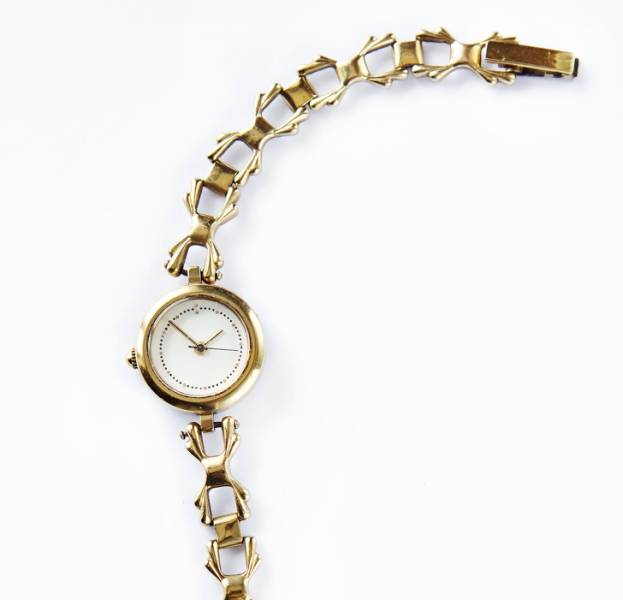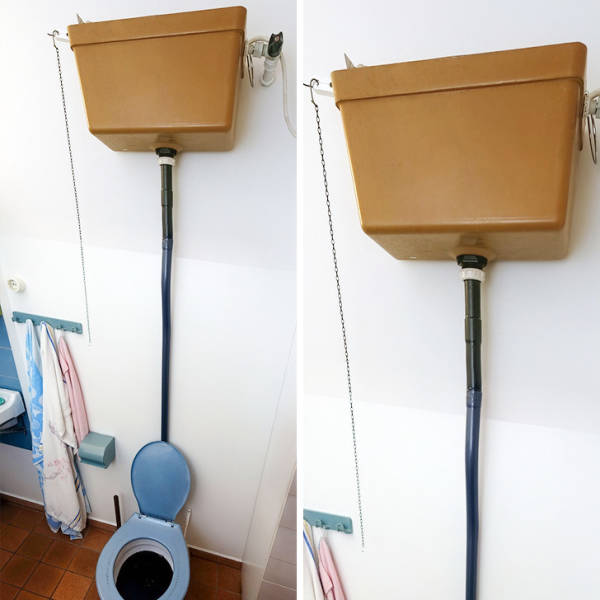Only privileged people could lie on a sofa.
It’s believed that the Romans were the first people who began to use sofas in Europe, where they could relax after a meal and talk to their guests. Only rich men could lie on sofas at this time. Women, children, and slaves were supposed to sit on stone benches.
The things that our ancestors kept in their wardrobes were very different from what we keep in them now.
Supposedly, it was the Middle Easterners who invented the first chest with a lid before their invention was adopted by the Ancient Greeks and Romans. After that, the Romans invented the lararium which is a distant relative of the modern wardrobe. It was a niche in the wall covered with doors. In a lararium, they kept not food or clothes but rather, sacred objects which included statues of gods, the dolls of girls who got married, or the locks of hair from young men who completed a rite of passage into manhood.
The fork was believed to have been invented by the devil.
A fork as a personal table-ware item was first used in the Byzantium Empire in the 11th century. In the beginning, it had 2 prongs and was used only to spike pieces of food. It’s interesting that it was first considered to be a devil’s weapon so it was prohibited.
For example, the Byzantine princess, Maria Argyropoulina was condemned by the Venetian clergy for using a fork during her meals. In their opinion, she was supposed to use her fingers which were “natural forks” provided to us by God. However, soon enough, forks became a common part of the aristocratic lifestyle, while poor people continued to eat with their fingers.
Only royalty could carry an umbrella, and it wasn’t supposed to protect them from the rain.
The umbrella was invented in China and Egypt in the 11th century BCE to protect people from the sunlight. In both countries, it was considered a symbol of power which was why only royalty could use it. It’s interesting that at this time, an umbrella’s weight was about 4 pounds and its length reached 5 feet.
Communal sleeping was a common practice.
In the 15th century, the bed became an integral part of people’s homes but it wasn’t used quite the same way it is today.
Hosts and guests slept together in the same bed. The middle space was reserved for a woman and her husband. This way, they could perform their marital duties. Single beds were not that popular because it was really hard to heat every room, so it was much warmer to sleep together.
Buttons were used as decoration.
Old Russian buttons in the shape of tiny weight pieces
In ancient times, buttons were considered clothing decorations while their functions were performed by laces and buckles. The first clothes with buttonholes appeared only in the year 2000 BCE and the buttons were made of stone.
A spoon with a long handle appeared thanks to the trend of big collars.
In the 17th century, a huge jabot collar became fashionable in Europe. But people who wore it encountered a problem: they couldn’t reach their mouth with a regular spoon. That was why the elongated version of a spoon was created like the ones we use for eating ice-cream or mixing cocktails today.
Wristwatches were called “bracelet-watches” and were intended for women.
In 1571, Queen Elizabeth received a wristwatch as a gift. Since then and up until the 20th century, these wristwatches were called “bracelet-watches” and were intended only for women. A wristwatch for men became fashionable in the 1900s. In the beginning, it was military men who wore them because the usage of a pocket watch wasn’t convenient during military maneuvers.
The first balconies served military purposes.
In the 11th century, a balcony was used as a cover for archers. The archers could aim better from there and had better visibility compared to when they had to shoot from arrowslits, for example. At the same time, the lower parts of their bodies were hidden behind thick walls.
There was a rope near each toilet in a public restroom but it wasn’t for flushing.
The first public toilets were just open spaces without any partitions. They didn’t usually have windows, so the darkness helped visitors to stay anonymous. They also weren’t divided into sections for men and women — both genders could use public toilets at the same time.
There was a rope near each seat but it wasn’t for flushing. A person would grab at it if they fell into a hole in the bench. This happened quite often because drunk men were regular visitors of public toilets. By grabbing at this rope, they could lift themselves. Otherwise, they had to call for help.

